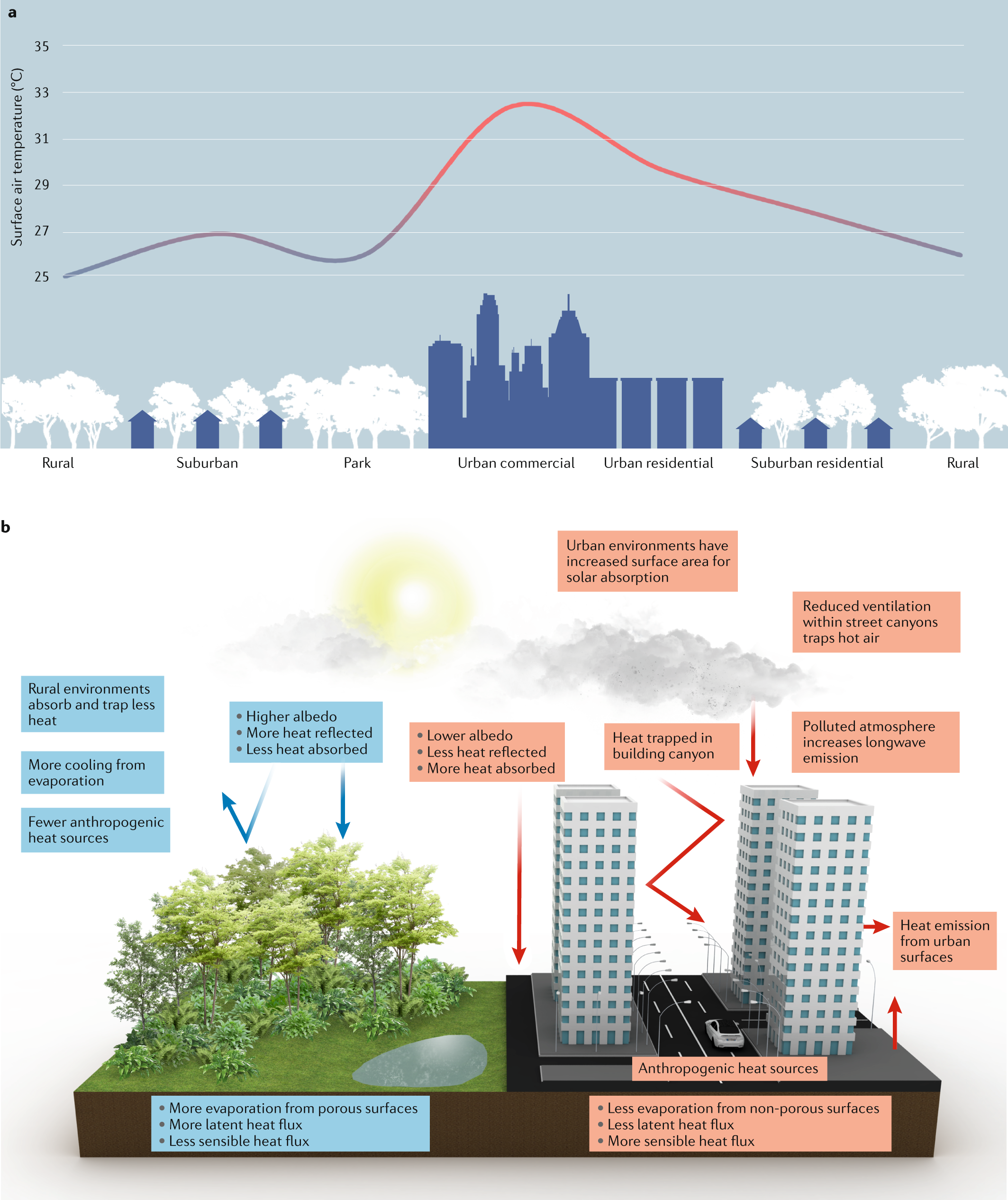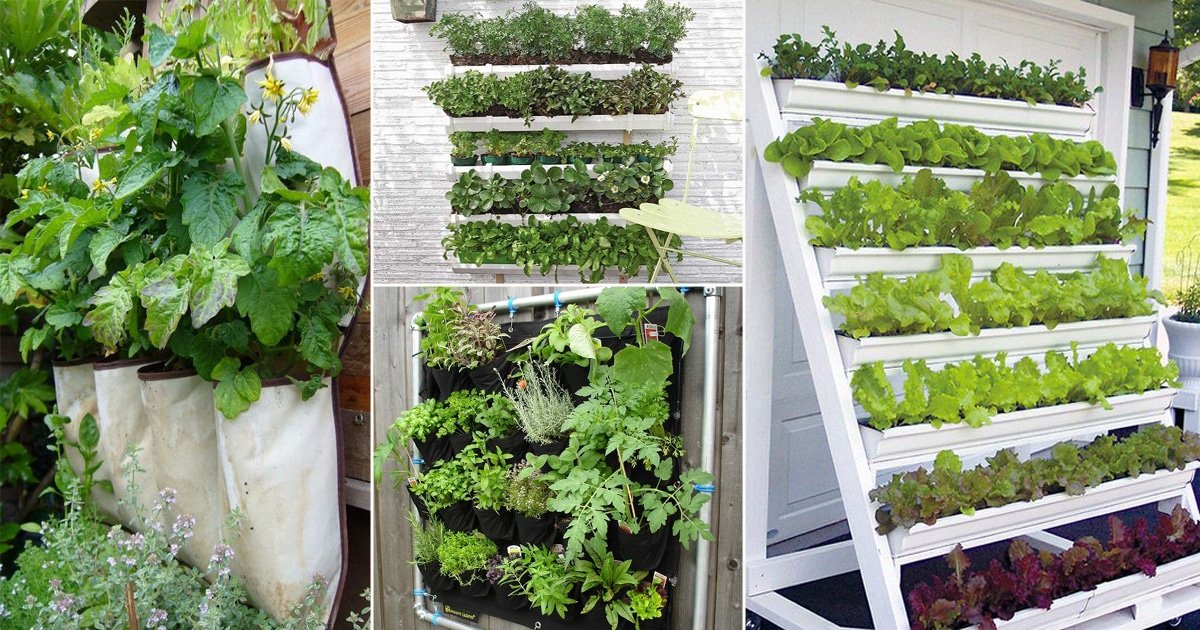Imagine living in a bustling city with towering skyscrapers and concrete streets as far as the eye can see. Now picture transforming that concrete jungle into a thriving oasis of greenery and life. This is the power of urban gardening, which not only brings beauty to urban landscapes but also serves as a key solution to the urban heat island effect. As temperatures in cities continue to rise, urban gardening provides a natural and cost-effective way to combat this issue, making our cities not only more pleasant places to live, but also more sustainable for generations to come.
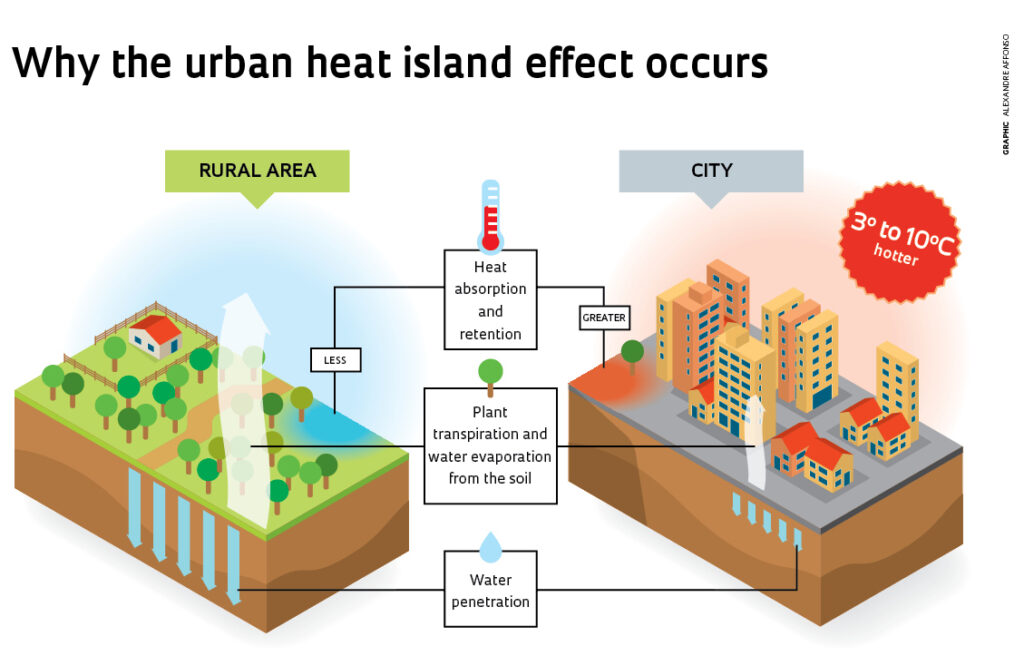
This image is property of land8.com.
1. What is the Urban Heat Island Effect?
1.1 Definition
The Urban Heat Island Effect refers to the phenomenon where urban areas experience significantly higher temperatures compared to their surrounding rural areas. This effect is primarily caused by the alteration of natural landscapes due to urbanization, resulting in the absorption and retention of heat by buildings, roads, and other infrastructure.
1.2 Causes
The main causes of the Urban Heat Island Effect include the use of heat-absorbing materials in urban construction, such as asphalt and concrete, which have low albedo and high thermal mass. Additionally, the lack of vegetation and green spaces in cities further exacerbates the problem as plants help regulate temperature through evapotranspiration. Waste heat generated by human activities, such as air conditioning systems and vehicles, also contributes to the rising temperatures in urban areas.
1.3 Impacts
The Urban Heat Island Effect has several negative impacts on both the environment and human health. The increased temperatures in urban areas can lead to higher energy consumption for cooling purposes, which in turn increases greenhouse gas emissions and contributes to climate change. Heat-related illnesses and deaths are more common in urban areas, particularly among vulnerable populations such as the elderly and young children. Additionally, the Urban Heat Island Effect can disrupt natural ecosystems, leading to changes in biodiversity and the overall ecological balance.
2. Understanding Urban Gardening
2.1 Definition
Urban gardening refers to the practice of cultivating plants and growing food in urban areas, often in limited spaces such as balconies, rooftops, and community gardens. It offers a unique solution to the challenges posed by urbanization, providing opportunities for individuals and communities to reconnect with nature and promote sustainable living.
2.2 Benefits
Urban gardening brings numerous benefits to individuals, communities, and the environment. For individuals, it provides a sense of accomplishment, improved mental well-being, and access to fresh and nutritious produce. Community gardens, in particular, foster social interaction and create shared spaces for residents to come together, enhancing community cohesion and reducing social isolation. From an environmental perspective, urban gardening helps mitigate the Urban Heat Island Effect by increasing green spaces, reducing the heat absorbed by buildings, and promoting evapotranspiration.
2.3 Types of Urban Gardening
There are various types of urban gardening that can be implemented depending on the available space and resources. Balcony and rooftop gardens involve the cultivation of plants in containers or raised beds placed on balconies or rooftops. Vertical gardens utilize vertical space by growing plants on walls or trellises. Community gardens are shared spaces where individuals or groups can come together to grow food collectively. Lastly, indoor gardening involves the cultivation of plants indoors using hydroponics or other soil-less growing techniques.

This image is property of thefield.asla.org.
3. How Urban Gardening Helps Mitigate the Urban Heat Island Effect
3.1 Shade and Evapotranspiration
One of the ways urban gardening helps mitigate the Urban Heat Island Effect is through the provision of shade. Trees, shrubs, and other tall plants create canopies that provide shade, reducing the amount of solar radiation reaching the ground and lowering surface temperatures. Additionally, plants engage in evapotranspiration, a process by which water is released into the atmosphere through the plant’s leaves. This evaporative cooling effect further helps to reduce ambient air temperatures in urban areas.
3.2 Reduction of Ambient Air Temperature
The presence of vegetation in urban areas can significantly reduce ambient air temperature through its ability to reflect sunlight and absorb heat. Plants have a higher albedo compared to the materials commonly used in urban construction, such as asphalt and concrete, meaning they reflect a larger proportion of incoming solar radiation. By absorbing less heat and reflecting more light, green spaces help to cool down the surrounding environment and decrease the intensity of the Urban Heat Island Effect.
3.3 Increased Green Spaces
Urban gardening directly contributes to the creation of green spaces within cities. These green spaces not only enhance the aesthetic appeal of urban areas but also provide multiple benefits. Trees and vegetation act as natural air filters, removing pollutants from the atmosphere and improving air quality. Moreover, the presence of greenery has been shown to reduce stress levels, enhance mental well-being, and promote a sense of tranquility among residents. Creating more green spaces through urban gardening initiatives can effectively combat the Urban Heat Island Effect and improve overall urban livability.
4. Success Stories of Urban Gardening Initiatives
4.1 City Examples
Across the world, many cities have successfully implemented urban gardening initiatives to mitigate the Urban Heat Island Effect and improve the quality of life for their residents. For example, Singapore has transformed its urban landscape through innovative green infrastructure solutions, such as vertical gardens and rooftop farms. These initiatives have not only reduced ambient temperatures but also enhanced biodiversity and created opportunities for urban farming. Similarly, cities like Portland, Oregon, and Melbourne, Australia, have embraced community gardening, fostering a strong sense of community and promoting sustainable living practices.
4.2 Community Gardens
Community gardens have emerged as a particularly successful model for urban gardening. These shared spaces provide opportunities for individuals and communities to engage in food production, education, and social interaction. One inspiring example is the Capital City Farms project in Washington, D.C. This initiative transformed vacant lots into productive urban farms, allowing local residents to grow their own food and improving access to fresh produce in underserved neighborhoods. Community gardens not only contribute to temperature reduction but also address issues of food insecurity and promote social equity.
4.3 Rooftop Gardens
Rooftop gardens have gained popularity in urban areas as a way to utilize underutilized space for greenery and food production. One notable success story is the High Line in New York City. Originally an abandoned elevated railway, it was transformed into a vibrant public park featuring greenery, trees, and gardens. The High Line not only provides a unique urban green space but also offers an elevated walkway where visitors can escape the heat, enjoy nature, and experience the benefits of urban gardening firsthand. Rooftop gardens offer numerous advantages, including the reduction of urban heat, stormwater management, and energy efficiency through insulation.
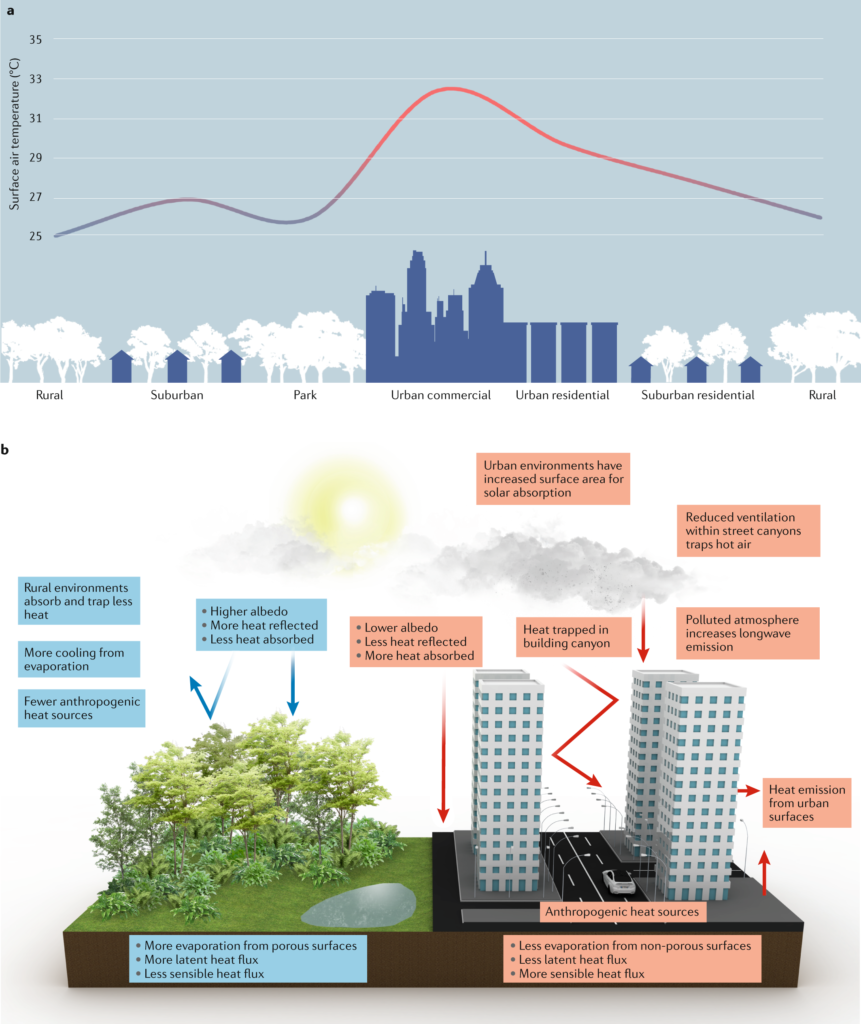
This image is property of media.springernature.com.
5. Challenges and Potential Solutions for Implementing Urban Gardening
5.1 Limited Space
One of the main challenges for implementing urban gardening projects is the limited availability of space in densely populated urban areas. However, innovative solutions such as vertical gardening, rooftop gardens, and the conversion of vacant lots into community gardens can effectively overcome this constraint. By utilizing underutilized spaces creatively, more urban gardening projects can be implemented, maximizing the potential for temperature reduction and improving urban livability.
5.2 Lack of Awareness and Education
Another challenge to widespread urban gardening adoption is the lack of awareness and education about its benefits and practical implementation. Many individuals may not be aware of the positive impact that urban gardening can have in mitigating the Urban Heat Island Effect and improving overall urban well-being. Education campaigns, community workshops, and partnerships with schools and universities can play a key role in raising awareness and providing the knowledge and skills necessary for successful urban gardening endeavors.
5.3 Access to Resources
Limited access to resources, such as land, funding, and gardening supplies, can be a deterrent for implementing urban gardening projects. Governments, non-profit organizations, and private sector entities can address this challenge by providing support in the form of grants, subsidies, and educational programs. Collaboration between different stakeholders, including local governments, community organizations, and gardening enthusiasts, can help pool resources and ensure the success and sustainability of urban gardening initiatives.
6. Best Practices for Implementing Urban Gardening Projects
6.1 Planning and Design
Effective planning and design are crucial for the success of urban gardening projects. This includes assessing available space, considering local climatic conditions, and selecting suitable plant species that can thrive in urban environments. Designing green spaces that promote the optimal flow of air, mitigate heat island effects, and provide shade is essential. Integrating water-efficient irrigation systems and utilizing sustainable materials also contribute to the long-term viability of urban gardening projects.
6.2 Community Engagement
Engaging the community is a vital component of successful urban gardening initiatives. Involving residents in the planning, design, and implementation stages fosters a sense of ownership and pride in the project. Community engagement can be achieved through workshops, volunteer programs, and regular communication channels. Encouraging residents to actively participate in gardening activities not only enhances social cohesion but also ensures the long-term sustainability of the projects.
6.3 Sustainable Practices
Implementing sustainable practices is key to the long-term success of urban gardening projects. This includes using organic and locally sourced fertilizers, adopting water-wise irrigation techniques, minimizing the use of pesticides, and promoting biodiversity through the selection of native plant species. Incorporating composting and recycling systems into urban gardening projects further enhances their sustainability by minimizing waste and closing the nutrient loop.
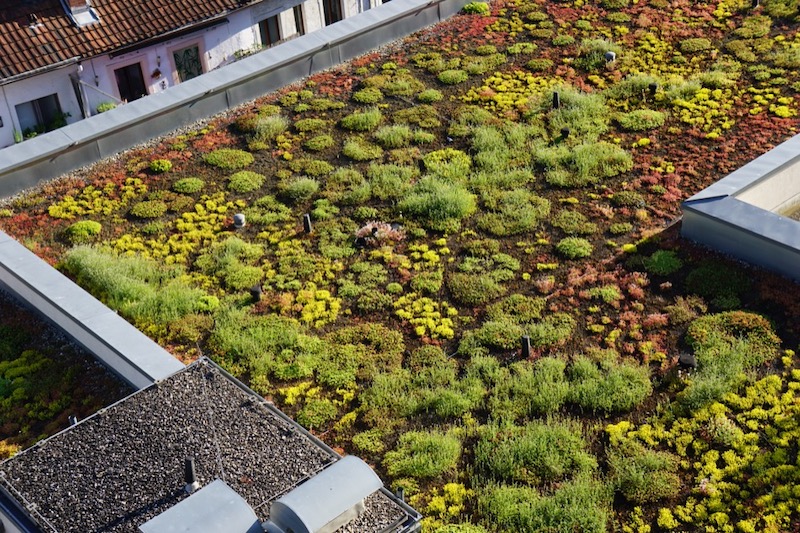
This image is property of assets.site-static.com.
7. Policy Implications and Recommendations
7.1 Government Support
Government support plays a crucial role in facilitating the implementation of urban gardening projects. Local governments can develop policies that prioritize the creation of green spaces, incentivize urban gardening initiatives, and streamline bureaucratic processes for obtaining permits. Allocating funds for educational programs, providing grants for community gardens, and offering tax incentives for rooftop gardens are some ways governments can support and promote urban gardening.
7.2 Incentives and Regulations
In addition to government support, the implementation of incentives and regulations can further encourage the adoption of urban gardening practices. These can include tax credits for individuals and businesses involved in urban gardening, zoning regulations that require the inclusion of green spaces in new developments, and building codes that promote the installation of rooftop gardens. By aligning incentives and regulations with the goals of urban gardening, cities can create an environment conducive to sustainable urban development.
7.3 Integration with Urban Planning
Integrating urban gardening into urban planning processes is essential for its successful implementation. By incorporating green spaces, community gardens, and rooftop gardens into urban development plans, cities can proactively address the Urban Heat Island Effect and promote sustainable living. Collaboration between urban planners, architects, landscape designers, and policymakers is crucial to ensure that urban gardening becomes an integral part of urban development strategies.
8. Case Study: The Impact of Urban Gardening in City X
8.1 Background and Context
City X, a densely populated metropolitan area, has been grappling with the challenges posed by the Urban Heat Island Effect. To address this issue, the city initiated an urban gardening program aimed at creating green spaces and reducing ambient temperatures. The program involves the establishment of community gardens, rooftop gardens, and the integration of vertical gardening in public spaces.
8.2 Implementation and Results
The urban gardening program in City X has been met with overwhelming success. Community involvement and engagement have been key drivers of its implementation, with residents actively participating in the planning and maintenance of community gardens. Rooftop gardens have been installed on public buildings, effectively reducing the heat absorbed by the structures and providing additional green spaces for residents to enjoy. Public parks have been transformed with vertical gardens, creating shading and cooling effects that have significantly impacted the local microclimate.
As a result of these efforts, City X has seen a noticeable reduction in average temperatures and an improvement in air quality. Heat-related illnesses have decreased, and residents have reported improved well-being and a greater sense of community. The urban gardening program has also created employment opportunities and stimulated the local economy through the sale of locally grown produce.
8.3 Lessons Learned
The success of City X’s urban gardening program highlights the importance of community engagement, effective planning, and policy support. The city’s proactive approach in integrating urban gardening into urban development plans and providing resources and incentives has been critical to its success. The program has demonstrated that even in densely populated areas, urban gardening can effectively mitigate the Urban Heat Island Effect and improve the overall livability of the city.
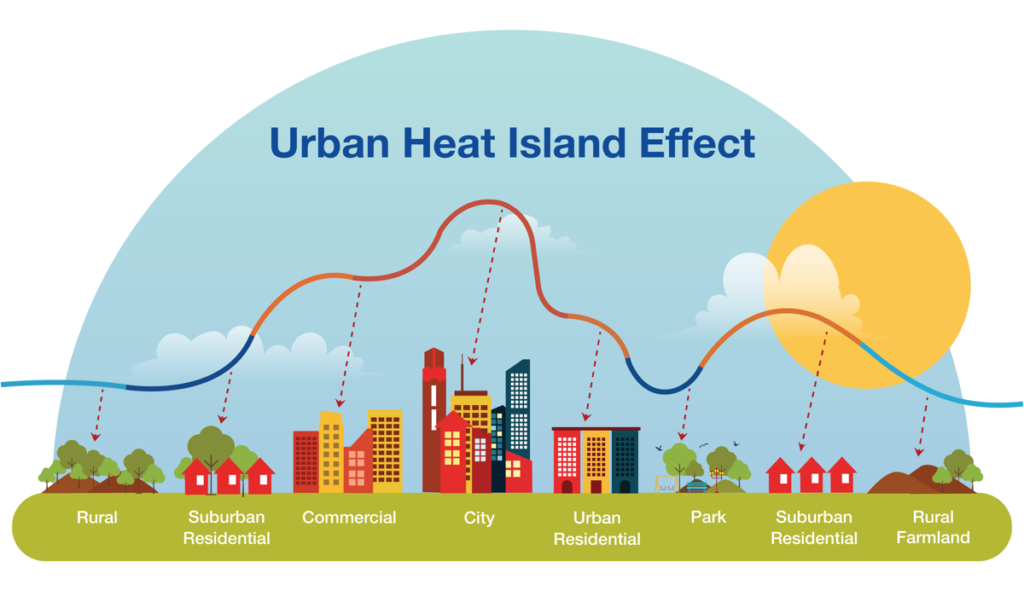
This image is property of gosmartbricks.com.
9. Conclusion
Urban gardening offers a key solution to the Urban Heat Island Effect by creating green spaces, reducing ambient air temperatures, and promoting sustainable living practices. Through the provision of shade, evapotranspiration, and increased green spaces, urban gardening contributes to the overall well-being of residents and the environment. While challenges such as limited space, lack of awareness, and access to resources exist, they can be overcome through proper planning, community engagement, and policy support. By implementing best practices, cities can harness the benefits of urban gardening and create more resilient, sustainable, and livable urban environments for all.

